How to Forex - A Beginners Guide to Forex Trading - Part 5: Start trading Forex

This is the final part of my easy-to-follow series on Forex to teach you what Forex is and how to use it to make money.
How to Forex - A Beginners Guide to Forex Trading

Table of Contents
In this five part series you will learn:
An Introduction to Forex - What is Forex, the brief history of Forex, the benefits and risks of Forex
How to use Forex Platforms - Trading Applications, Brokerages, Opening live and demo accounts
Forex Trading Strategies - Trend trading, Scalping, Range trading, Breakouts, Signal trading, and Risk Management
Market Analysis - Fundamental and Technical analysis
Start trading Forex - Summary of all lessons, how to create your own strategy, the psychology of trading, and remembering the risks
5. Start Trading Forex

Welcome to the final part of the How to Forex series
(A message from the author)
I hope you have enjoyed the series so far as I have tried to relay the A-to-Z of currency trading in an easy simplistic way without leaving out any important information.
By using this guide now and in the future you will be able to trade Forex successfully. However, it is your responsibility to yourself to manage your risks, trade responsibly, and never enter any trade without first researching the market you're entering.
Be smart and you too will become a successful Forex trader.
What Have We Learned

In this series we have covered the following aspects of Forex trading:
1. The basics of Forex
We have learned that Forex - the Foreign Exchange Market - is an over-the-counter market for trading currency pairs. Forex traders buy / sell currencies in order to make a profit off of price movements.
2. How we use Forex
We have learned that to trade Forex we need to go through a broker. A broker is a service provider that lends money to traders. The amount of money a trader borrows on each trade is called leverage. A broker will also provide a trading platform (software) that the trader uses to execute each trade.
3. Basic Forex Strategies
We have learned that there are certain rules we can follow when making each trade. A set of rules is called a strategy. Each strategy is different and every trader has their own. A strategy helps a trader choose when to execute trades.
4. How to analyse the market
We have learned what market analysis is. Market analysis is when a trader uses different methods to predict the direction a currency price is moving. Traders use economic indicators, such as central bank announcements, to indicate a currencies strength. Traders may also use charting techniques to indicate the direction of immediate price movements. Successful traders use both.
We will be using what we have learned to create our own trading strategy
Create a Strategy
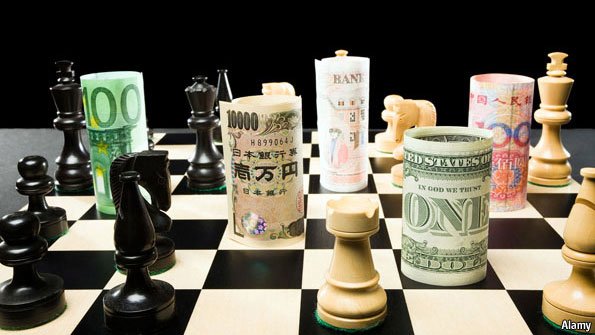
Creating a strategy is the key to successful Forex trading.
No Forex trader has ever been successful in trading without knowing what he / she is doing.
A successful Forex trader knows when they should enter a trade, when they intend to exit that trade, and precisely how much they are willing to lose in a trade if it goes wrong.
Choose how much you are going to risk
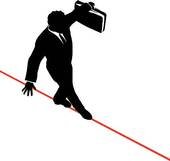
When trading we must first decide how much we are willing to risk on each trade before entering a trade.
By knowing how much we are risking we can mitigate our losses when the market is not going in our favor.
A good rule of thumb when choosing how much to risk on each trade, is to make sure you are not going to lose more than the amount you expect to win. We do this by setting a stop-loss.
By setting a stop-loss we can set the exact amount that we are willing to lose.
You may also set a trailing stop-loss that will move towards your entry point as your position starts to make a profit.
When a traders position has moved into a winning position a trader can then move their stop-loss to ensure they win a certain amount on their position no matter where the price moves next.
Do not move your stop losses further away from where you enter a position. This is dangerous.
Set the amount you are willing to lose before entering a trade and then, stick to it!
Choose a time frame for each trade

Before entering we must first decide how long we will be trading for.
To decide how long a trader will hold a position a trader must first analyse the market price and then speculate the direction that price is moving.
After predicting the direction a price is moving a trader will also speculate how long that direction will last for.
If the direction of a price looks to continue for a long period of time, a trader will decide to enter a long-term position.
If the direction of a price is volatile and looks like it will only continue its path for a short period of time, a trader will enter a short-term position.
A trader will try to predict long-term and short-term trades by using different time frames on a currencies chart.
Hourly, daily and monthly time frames help to predict long-term price patterns.
Fractional time frames, such as half hourly, 15 minutes and minute time frames help to predict short-term price patterns.
Some traders prefer to only enter long-term trades whereas other traders prefer to trade more frequently over short periods of time.
Pick a currency pair

In order to execute a profitable trade we must decide which currency pair is worth trading.
There are three types of currency pairs - Major pairs, cross pairs and exotic pairs.
| Major Pairs | Cross Pairs | Exotic Pairs |
|---|---|---|
| EUR/USD - European Zone/United States | EUR/GBP | EUR/TRY - Euro/Turkish Lira |
| USD/JPY - United States/Japan | EUR/CHF | USD/SEK - US Dollar/Swedish Krona |
| GBP/USD - United Kingdom/United States | EUR/CAD | USD/NOK - US Dollar/Norwegian Krone |
| USD/CAD - United States/Canada | EUR/AUD | USD/DKK - US Dollar/Danish Krone |
| USD/CHF - United States/Switzerland | EUR/NZD | USD/ZAR - US Dollar/South African Rand |
| AUD/USD - Austrailia/United States | EUR/JPY | USD/HKD - US Dollar/Hong Kong Dollar |
| NZD/USD - New Zealand/United States | GBP/JPY | USD/SGD - US Dollar/Singapore Dollar |
| - | CHF/JPY | - |
| - | CAD/JPY | - |
| - | AUD/JPY | - |
| - | NZD/JPY | - |
| - | GBP/CHF | - |
| - | GBP/AUD | - |
| - | GBP/CAD | - |
Traders use market analysis to predict the strength of a currencies price.
Traders look for currencies that are trading high volumes.
Traders tend to stick to major currency pairs, such as EUR/USD, EUR/GBP, or USD/JPY, because they trade high volumes each day. This makes the market more liquid and more profit can be made when the price moves.
Traders use economic indicators - statistical reports and financial announcements - to indicate when prices are going to move and the forseeable strength of that currency.
Choose a currency pair that suits your time frame. If you are trading for a short-term then you are best to pick a major currency pair that is trading high volumes. If you are trading long-term then you are best to look for a currency with lower volumes and steady price channels.
Always keep up to date with the currency pair that you choose. A price can be immediately affected after a financial announcement has been made for that currency.
Choose the right indicators
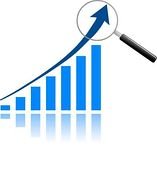
A successful trader uses multiple indicators to analyse the direction of a currencies price.
Familiarize yourself with the different indicators so you know what best suits you.
Using too many indicators can be confusing. Keep it simple so that you do not confuse yourself.
Always indicate a price channel or trend before entering the market. This way you have a general idea of a price's current & future direction.
Know when to enter & exit

Once you have chosen a currency pair and have indicated the direction that it is moving you need to know when to enter & exit.
Only enter a trade after analyzing the market.
Decide before entering a trade where the price is going and where you want to enter & exit.
Once you have entered a trade set stop-losses to ensure you're only risking the amount you wish.
If you feel confident the price will go to a certain point before revsering you can set a take-profit
A take-profit will exit . close your trade at a specific price just as a stop-loss does.
Never set your stop-loss at a greater amount than your take-profit as you will be losing more than you can win.
Stick to your entry & exit rules. Do not move them as the price moves. Moving your take-profit and stop-losses can be risky and is not recommended for novice traders.
Test your strategy
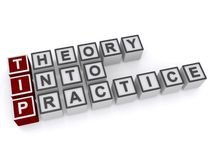
Once you have created a trading strategy you should test it on a demo account.
By using a demo account we can test out strategy on the live market without losing any real money.
You can create as many demo accounts as you wish.
By creating multiple demo accounts we can test different strategies at the same time.
If your demo account starts to make a steady profit using the strategy you have created then you should feel confident enough to enter trades on your live account.
If your strategy fails, always come back to your demo account until you feel confident jumping back into your live account.
Testing your strategy before entering the market is the safest way to ensure you're doing the right thing.
By testing your strategy you will feel a lot more confident when trading Forex.
Stick to your strategy!
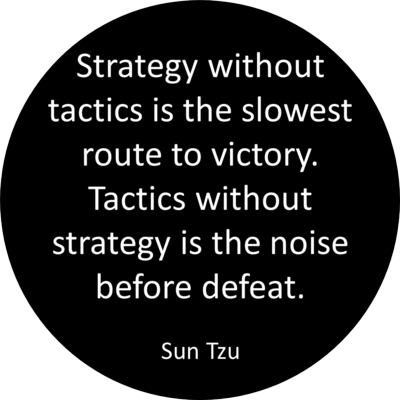
Once you have a trading strategy that works, stick to it!
Do not break the rules you have set.
If you do find you are losing too much then stop trading, create a new trading strategy, and start again.
The Psychology of Forex Trading

Forex it can become very emotional draining because prices fluctuate constantly. Watching a chart closely can cause a trader to stray from their strategy and make bad decision. This happens because a trader lets their emotions get in the way of their trades. As strange as it may sound, it is best to trade without emotions and to trade purely with your entry & exit strategies.
The two main emotions that get in the way of trading are greed and fear
Greed
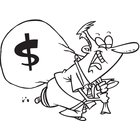
Greed is the number one enemy of Forex traders. Greed causes traders to think irrationally and only about the potential money they could make. Greed makes a Forex trader think unrealistically. Greed makes us impulsive and we end up making bad decisions.
When we give into greed whilst trading we forget the rules that we have set. We forget our strategy. We start to risk more, thinking at the time that we will earn more. This is usually untrue. Traders who succumb to greed risk too much and forget all the things that make a successful trader.
Fear

Fear is equally as much an enemy of Forex traders as greed is. Fear however, causes a trader to think the worse. Fear makes us exit positions before they become profitable, even when our strategy says otherwise. Fear leads to irrational decisions that over time can destroy your account.
When we give into fear we start to panic. We again forget our strategy. As soon as we see a position is losing and we close it immediately. Doing this over a period of time will deplete your account. We need to remember that the market is liquid and very volatile. Just because a position is losing does not mean it will continue to lose.
If you have set rules for entry & exit then you need not fear anything. If you see that your position is going to hit your stop-loss then it's okay. Let it. Take the loss and move on. Do not move your stop-loss because you fear that the price will reverse and that you will miss out on a profit. Instead, stick to your rules and continue to open positions based on your strategy and not based on your emotions.
Remember the Risks
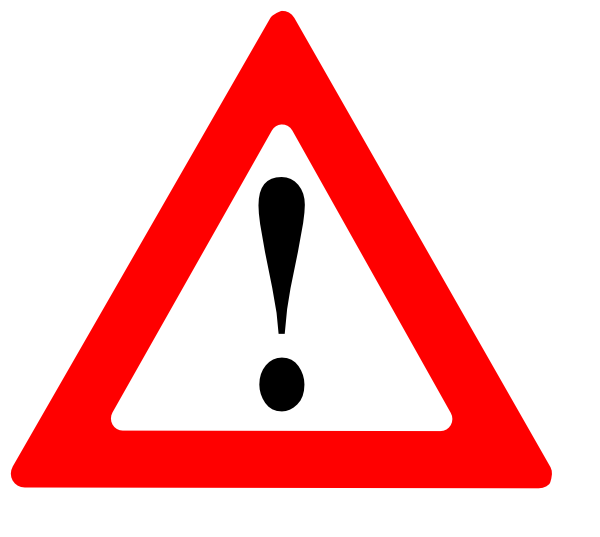
Throughout this series I have continued to mention the risks involved with Forex trading. This is because the risks will cause you real harm if you do not manage them.
Risk management is the most important part of being profitable. When we have a strategy that includes risk management we can feel confident even when we are losing on a position / trade. A trader who does not mitigate their risks is not going to be successful for very long.
It only takes one bad trade to ruin your Forex trading career. If you make bad trades and forget the rules you have set for yourself then you will eventually make a mistake that could cost you all of your money.
Stick to the rules and you too will become profitable on Forex over time.
Now you can start trading Forex!

Congratulations on completing this Forex how-to series.
You can view Part 1 of the series here
You can view Part 2 of the series here
You can view Part 3 of the series here
You can view Part 4 of the series here
Thank you for reading this How to Forex Series
This guide is exclusive to Steemit
It has been provided to you by @senseiteekay - Your friendly neighborhood superhero
All learning resources and references for each part of this series will be linked below
If you would like to donate towards my work you can do so using the button below
Disclaimer:
The contents herein these articles are not investment advice. Follow this guide of your own accord. If you do choose to follow these guides do so at your own risk. I am not a qualified professional. I am self taught and provide these guides as a guide only and not as a step-by-step rule to make money.
The Forex market carries many risks and anyone who decides to trade on Forex should know these risks before opening an account. I advise you to fully read each part of my series and to also do further research if there's anything you do not understand herein these guides.
Please be safe when trading.
Learning Resources & References:
https://steemit.com/forex/@senseiteekay/how-to-forex-a-beginners-guide-to-forex-trading-part-1-an-introduction-to-forex
https://steemit.com/forex/@senseiteekay/how-to-forex-a-beginners-guide-to-forex-trading-part-2-how-to-use-forex-platforms
https://steemit.com/forex/@senseiteekay/how-to-forex-a-beginners-guide-to-forex-trading-part-3-forex-trading-strategies
https://steemit.com/forex/@senseiteekay/how-to-forex-a-beginners-guide-to-forex-trading-part-4-market-analysis
http://www.sharptrader.com/new-to-trading/forex/majors-minors-exotic-currency-pairs/
https://www.equities.com/news/how-to-choose-a-profitable-currency-pair-in-forex
http://www.fxtsp.com/1506-choosing-the-right-trading-indicator/
http://www.forexfraud.com/learn-forex-trading/forex-trading-psychology.html

I need to finance a new Death Star. This will help.
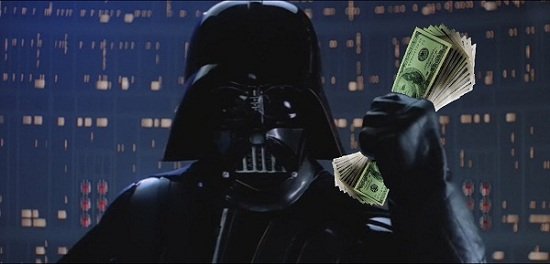
Ha. Without a doubt, you have the best profile on steemit @lordvader
Thanks to this @senseiteekay, im interested with trading in fact i already did it few years ago but stop because i lost everything in my wallet. My lack of knowledge, strategy and experience made me lose. I thouht it was something easy buy just watching the ups and down but it wasn't, it requires analysis which I failed to have.
I have no idea on the constraints that I need to look in to before I can fully understand how it goes. I wish someday I could fully understand it.
Thanks to this post, unfortunately I need to read the part 1-5 hoping that I can find something beneficial for me.
Following you.
Hi @juvyjabian and thank you for your input. I'm sorry to hear you blew your account. It happens to a lot of people that jump in without first researching the market. However if you do read each part of this series you will know exactly what it takes to become successful, especially in part 4 which teaches you how to predict the market which it sounds like you're interested in.
It's hard to learn Forex overnight. I myself have learned some new things while writing these guides. Everything I need to know is now inside of them and I can go back whenever I need to remember something.
Bookmark this guide for future reference so that you too can do the same if you are going to start trading again.
Really nice post, good job. Love the cited sources as well.
I should also add where I stand when it comes to Forex.
Forex is the devil and I hope it fails soon. In the meantime however, I intend to keep making a profit off of it. I predict a coming financial crisis and the charts seem to tell the same story. If that happens and you know how to trade you will be able to make huge gains before fiat is completely dead 😃